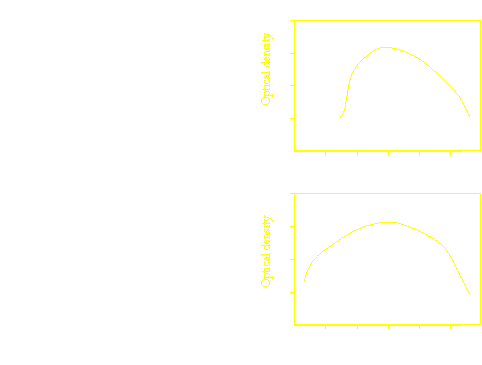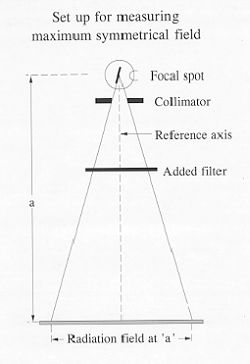

One of the most important factors in selecting an X-ray tube is the radiation
field coverage at a specific distance form the focal spot.
The NEMA standards define a test procedure to identify the size of a radiation
field at a distance ‘a’ from the focal spot, symmetrical with respect to the
reference axis and with the field edges parallel to the major axes x and y. A
distribution of relative air kerma rate along the perimeter of not less than 25%
as compared to the maximum density in the measuring plane, shall be
achieved.
The IEC standards define the maximum symmetrical radiation field as the
greatest field at a distance ‘a’ from the focal spot, with its edges parallel to the
major axes, in which the distribution of air kerma along the major axes x and
y does not fall by more than 70% of the relative measured at the reference
axis. At no point along the major axes shall the value of the air kerma exceed
110% of that at the reference beam.
The actual measurement of the air kerma distribution is performed by means
of a non-screen film to cover the entire radiation field exposed to obtain a
maximum density of between 1 and 1.4 optical density. The exposed and
developed film is scanned by means of a densitometer.
Field size (cm
0
20
40
60
80
100
120
0.5
1.0
1.5
2.0
0
20
40
60
80
100
120
0.5
1.0
1.5
2.0
Typical optical density scans
Along anode-cathode axis
Across anode-cathode axis
Light field X-ray field alignment:
The alignment can be tested by using a simple home-made grid or
commercially available test tool: